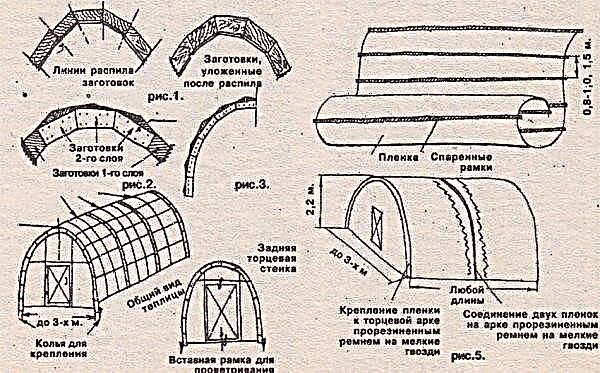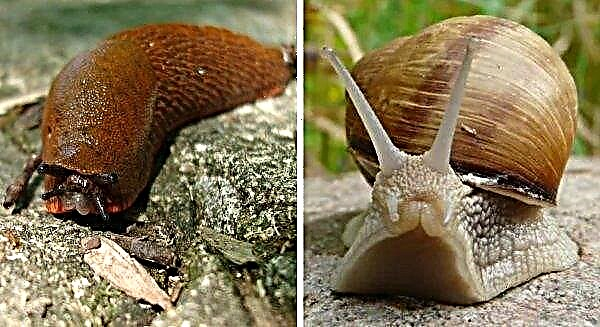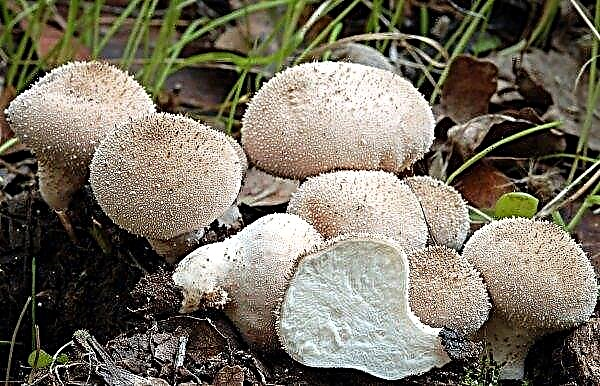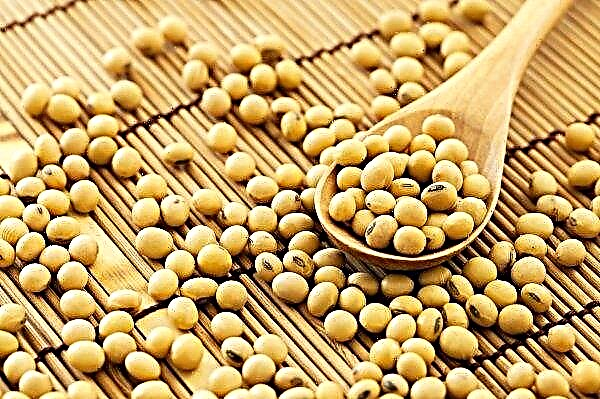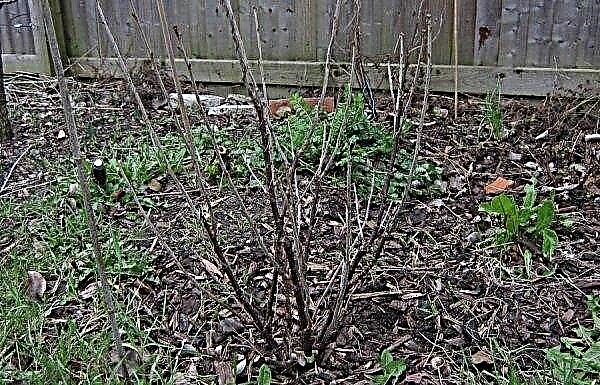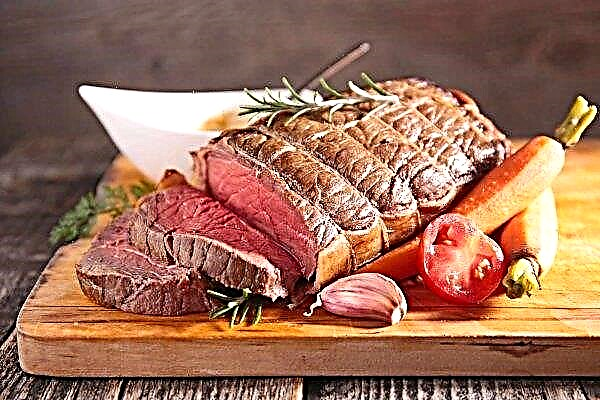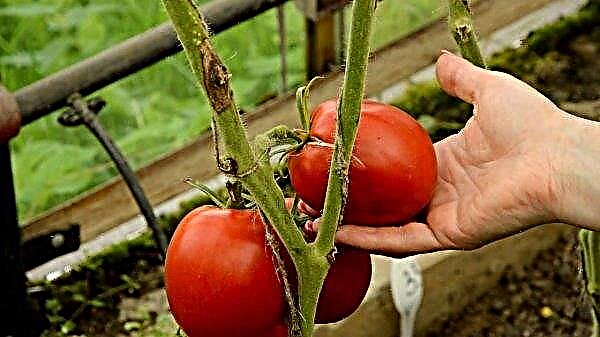Carrots are a tasty and healthy root crop, but this plant is very thermophilic and photophilous, and therefore it is traditionally very difficult to grow it in regions located at least slightly north of mid-latitudes. Fortunately, breeders have learned to develop cold-resistant varieties of root crops suitable for cultivation in the Urals and Siberia. In particular, residents of these areas should pay attention to Altai gourmet carrots, the seeds of which are sold under the brand of the well-known agricultural company Siberian Garden, which will be discussed in this review.
Description and characteristics of the variety
Altai gourmet is a very young variety. It was included in the State Register of Breeding Achievements only 10 years ago (2009) and is specifically recommended for cultivation in Western Siberia - in the Omsk, Tomsk, Tyumen, Kemerovo and Novosibirsk Regions, as well as in Altai.
It is interesting that the variety is not obliged by its creation to a large scientific institution, but to private farmers. So, the initiators and owners of the Altai gourmet patent are owned by individual entrepreneur Dederko Vladimir Nikolaevich (Novosibirsk), as well as the Svetlana Peasant Farm and Ugarova Svetlana Viktorovna (Barnaul).

Description of root crops
Altai gourmet is usually referred to the Nantes variety, the main distinguishing feature of which is a very sweet, tender and juicy pulp with no pronounced core. At the same time, the root crops of this variety have an elongated-conical shape, which is more characteristic of the Flakke variety (Valeria), and at the same time a rounded tip (a typical feature of the Berlikumer variety).
The length of root crops can be from 18 to 25 cm, which greatly depends on the growing conditions. The average weight of Altai gourmet is 150 g.
The color of the pulp in carrots is very saturated, red-orange, due to the high content of carotene, and the characteristic tenderness and sweetness of the variety provides a high (up to 8%) sugar content. The percentage of solids in Altai gourmet averages 15% (with excessive watering, this indicator may be less), which ensures such important properties of the variety as excellent transportability and suitability for long-term storage.
 The aerial part of the variety is represented by a semi-spreading rosette consisting of deeply cut leaves of medium length
The aerial part of the variety is represented by a semi-spreading rosette consisting of deeply cut leaves of medium length
Ripening time
The root crops of Altai gourmands reach biological ripeness on average 90–110 days after the emergence of friendly seedlings, which allows us to classify the variety as mid-season.
Mid-season carrots, therefore, are the perfect balance, allowing you to get high-quality, sweet and light root crops in a relatively short time.
Important! Early ripe varieties of carrots ripen in 60–90 days and are grown mainly for immediate consumption (or for sale), later they reach ripeness in 110–140 days, are well stored, but unsuitable for growing in regions with a short summer.
Productivity
The yield indicators of the variety are not very high: from 1 m² it is rarely possible to remove more than 4-5 kg of root crops, however, even such productivity is considered quite good for Siberia.

Advantages and disadvantages of the variety
- The undoubted advantages of the Altai gourmet include:
- unpretentiousness, frost resistance and the ability to give a stable crop even with minimal care;
- the ability to quickly adapt to different climatic conditions;
- very high taste characteristics of root crops and the increased content of carotene in them;
- large sizes of carrots, uniformity and rich color of pulp, which increases the commodity characteristics of the vegetable;
- Suitability for long-term storage;
- excellent transportability;
- universal purpose (suitable for fresh consumption, as well as for any heat treatment).
- Speaking about the disadvantages of the variety, we have to admit that the manufacturer failed to achieve outstanding success in such characteristics of the variety as:
- productivity;
- resistance to diseases and pests;
- a tendency to flowering and shooting.
Features of growing carrots Altai gourmet
Altai gourmet is characterized as unpretentious and not requiring special care, but this information should not be taken literally. The fact is that carrots are initially a very capricious culture, and therefore even its most undemanding variety will never form large, sweet and dead fruits if it is not provided with normal conditions.
Did you know? In the New Zealand town of Ohakun, there is a kind of monument to a carrot 7.5 m high. Initially, this root crop was intended to serve as a support for advertising a local bank, but then it was transferred to the center of the North Island region, which is famous throughout the country for its rich harvests of this crop.
Growing conditions
Altai gourmet is grown according to the same technology as other varieties of carrots, however To increase productivity, experienced gardeners are advised to adhere to several additional recommendations when cultivating this crop:
- before planting and during cultivation use additional growth stimulants;
- very thoroughly clean the site of plant debris before planting seeds and then carry out the weeding procedure regularly;
- the garden bed is best prepared in advance, even in the fall: during this period it is necessary to dig and make all the necessary fertilizers: an aqueous humus solution or compost (a layer of at least 5 cm), as well as phosphorus and potassium fertilizing (on average, 8– 10 and 15–20 g of each element per 1 m² of area);
- it is recommended to introduce manure into the soil no earlier than a year before planting carrots; this condition is especially important for adherents of organic farming;
- use for cultivation areas with light, loose and well-drained soil (ideally sandstone or loam) with a deep fertile layer (at least 30 cm) and a slightly acidic reaction (pH level within 6–6.5), and lowering the acidity by liming for carrots is considered undesirable;
- carry out thorough pre-sowing treatment of seeds not only to protect them from diseases and pests, but mainly to accelerate germination;
- mulch the bed to preserve moisture in it;
- at the stage of seed germination, cover the garden bed with a film to keep heat in the soil, but at the same time periodically remove it for the purpose of ventilation;
- Do not forget to thin out the shoots.

Landing time
Regarding the optimal planting dates for the Altai gourmet, the opinions of gardeners differ. There is an opinion that this is best done at the end of April, since the seeds show the fastest germination only in well-warmed soil. In particular, such indicators of the relationship between the average daily air temperature and the time that elapses from the moment of sowing the seeds to the appearance of seedlings:
| Temperature | Germination time |
| + 3 ... + 4 ° C | 20–28 days |
| + 12 ... + 15 ° C | 15-18 days |
| + 18 ... + 20 ° C | 6-7 days |
But there is another position. Her supporters argue that there is no point in waiting for the carrot seeds to grow sufficiently fast, especially since the average daily temperature in Siberia will not reach either April or even May. On the other hand, in the first days after sowing, carrots need not only warmth, but also high soil moisture, while by the end of spring the soil usually dries out to a considerable degree, which means that the bed will need to be actively and abundantly watered.

But if sowing is carried out at a time when the soil has barely thawed, then in its lower layers enough moisture will remain to provide seeds with it without any additional effort. In this case, you can not be afraid that the seeds will freeze: even carrot varieties that do not have high frost resistance at the planting stage can easily withstand temperature drops to -2 ... -3 ° C.
Important! Planting dates do not have any effect on the subsequent keeping quality of the root crop, so there is no point in delaying sowing.
From the foregoing, it can be concluded that Altai gourmet seedlings on the bed will appear at about the same time both during the early (mid-March) and usually recommended (late April) planting dates, while using the first option will allow on the one hand, to save irrigation water, on the other, to save time for other garden work, which by the middle of spring is always much more than at the beginning.

Choosing a place and preparing the garden
The most important requirement for choosing a place for planting Altai gourmet is maximum lighting. Absolutely all varieties of carrots do not form full-fledged root crops in the shade, so you should not even try to grow them in such conditions. The site should be completely open and located as far as possible from any tall plants that block the light during the day, even for a short period of time or create partial shade.
It is better that the bed is flat, although a slight slope to the south or southeast side is also acceptable.
Important! Altai gourmet cannot be grown on stony soil: such soil contributes to the formation of ugly and “branching” root crops.
The presence of sand in the soil is welcomed, this makes the soil light, so long root crops are much easier to punch their way for growth, and, therefore, they will not deform. But waterlogging, waterlogging, and the proximity of groundwater are unacceptable: in such conditions, carrots decay (however, if the earth is too dry, the flesh of root crops becomes very hard and tasteless, which is not typical for the variety).
 Another important condition is the absence of weeds, which, in addition, can obscure the much-needed sunlight.
Another important condition is the absence of weeds, which, in addition, can obscure the much-needed sunlight.
Finally, when choosing a place for the Altai gourmet, one should not forget about crop rotation, that is, take into account which crops grew on this bed last year. Carrot precursors should be evaluated according to the following rules:
If the place for the future beds was chosen and prepared in the fall, in the spring it is enough to just loosen the soil slightly.
Preparation and scheme of planting seeds
It is better to germinate carrot seeds to the point of hatching (the appearance of root buds up to 5 mm long) before planting. This agricultural technique will greatly accelerate the process of germination, but if there is no time for seed germination, it is worth at least soaking them for several hours.
Important! It is best to soak and germinate the seeds not in tap water, but in melt water, and for its preparation it is advisable to use freshly fallen snow, which has not had time to absorb the dirt and chemical impurities present in the air.
Germination procedure is carried out as follows:
- A wide container with low sides is filled with sawdust and moisturized well. Water should be slightly warmed up (+ 22 ... + 25 ° С).
- A layer of toilet paper or soft tissue is placed on top of the sawdust. It is undesirable to use gauze, because in the process of hatching seeds, their roots will cling to the threads, and it will be difficult to separate the seed from the tissue without damaging the root.
- The seeds are laid on the prepared layer and covered with another layer of paper or fabric.
- Spray the top layer with a growth stimulant (diluted in water according to the instructions with the preparation "Epin", "Kornevin", "Heteroauxin", etc.).
- Warm water is added to the top of the tank so that it completely covers the entire contents.
- Then the container is tightened with cling film or placed in a plastic bag, in which several holes for ventilation are previously made.
- Ready “greenhouse” is placed in a warm place for 24 hours.
- After a while, the container can be placed to complete the germination procedure on the lower shelf of the refrigerator, where it should be left for several days, periodically monitoring the condition of the substrate (if necessary, add water) and root formation.
 After slightly drying the seeds, they must be sown immediately, otherwise the awakened embryos in the seeds will die.
After slightly drying the seeds, they must be sown immediately, otherwise the awakened embryos in the seeds will die.
Sowing of Altai gourmet is carried out by the tape method. Shallow (30 mm) trenches should be made on the prepared bed, observing a distance of 20 cm between them. Seeds are laid out in the resulting grooves and covered with soil or moistened sand. Since carrot seeds are very small, there is no point in following a certain pattern when laying them, although, with sufficient experience, you should adhere to the standard norm - 3-6 g of seeds per 1 m² of beds. If there is no such experience, it is better to sow more, and then remove the extra shoots than to get a “bald” patch and then urgently carry out additional sowing.
Important! Regardless of whether the seeds germinated or were only soaked, they cannot be used for sowing immediately after extraction from the container. For several hours, the seed should be kept on a dry paper towel to get rid of excess moisture.
In addition to the standard scheme, assuming the same distance between the rows, you can use more advanced techniques, for example:
- "Two-line" - 2 rows with an interval of 6 cm from each other and a distance to the next pair of 29 cm;
- "Three-line" - 3 rows with an interval of 8 cm from each other and the distance to the next triple 27–29 cm.
 Sometimes, on the contrary, a wide-row landing pattern is used when 45 or even 60 cm of passage is left between the rows
Sometimes, on the contrary, a wide-row landing pattern is used when 45 or even 60 cm of passage is left between the rows
Care Features
If the carrots are sown correctly, and the site for which is selected is suitable, further care for seedlings is not particularly difficult. But a good harvest can be obtained only if the gardener knows some of the secrets of growing a crop well and strictly follows these rules.
Watering
The first law to get good carrots is competent watering. Like other varieties of this culture, the Altai gourmet needs moisture in the soil, but this need changes significantly during the growing season.
Important! AT 8 out of 10 cases, the seed of carrots does not germinate just because the soil in which it is located is too dry.
It is also interesting that it is most critical to regularly and abundantly water the planting of carrots at the stage of seed germination just in the cold regions, where the Altai gourmet is usually grown. Sharp winds strongly dry out the soil, therefore, watering the beds in such conditions sometimes need to be carried out not just every day, but even 2-3 times.
 Two other fundamental errors in watering a crop are irregularity and scarcity.
Two other fundamental errors in watering a crop are irregularity and scarcity.
Soil moisture at the root growth depth (30–35 cm) should correspond to the following parameters:
- 75% - before seed germination and during the formation of root crops;
- 65–70% - in between the above periods;
- 50-60% - two weeks before harvesting.
For the northern regions, where the Altai gourmet is usually cultivated, after emergence and before the formation of root crops, the bed can be watered only in very dry weather, and for the entire growing season, it is enough to carry out only 2-3 irrigation with such a water consumption per 1 m² of bed:
- at the beginning of the growing season - 12-15 l;
- during the formation of root crops - 20-25 liters per 1 m² of beds.
Did you know? A record-length carrot is grown by the measures of the city of Kleyat (Lebanon) Ahmed Ibrahim. Root crops with a length of more than 60 cm grow on its bed, and the largest specimen is 130 cm, and the measure itself not only swears that it does not use any growth stimulants, but also complains about the difficulties with selling its anomalous crop.
In more southern latitudes, carrots are watered every 8–10 days, consuming 25–35 and 40–50 liters of water per 1 m² of beds, respectively, depending on the phase of the growing season.
However, in all cases, at least 15, and preferably 20 days before harvesting, watering should be stopped completely, this will increase the dry matter content in root crops, and, accordingly, increase its taste characteristics and shelf life.
Fertilizer application
The main part of the fertilizers necessary for the normal growth of the Altai gourmet is introduced into the soil in advance, simultaneously with the autumn preparation of the garden. In the future, the feeding scheme directly depends on the initial state of the soil and climatic conditions.

Usually 2-3 such procedures are carried out, for example:
| Application Time | Top-dressing composition |
| After the second thinning | Integrated nitrogen-potassium-phosphorus fertilizer, for example, nitrophoska or the drug "Kemira" |
| At any time during the growing season, if the weather is too cold - sometimes 2-3 times | Calcium sulfate (will protect root crops from hypothermia and maintain their quality) |
| During the formation of root crops | Wood ash (you can just sprinkle the area of earth around the outlet) |
Important! In order for Altai gourmet to be stored longer, the proportion of potassium in the soil should exceed nitrogen by 20–30%.
Thinning
It is ignoring such a procedure as thinning seedlings that leads to the fact that inexperienced gardeners carrots do not grow as they should be according to the description of the variety.
In order for root crops to form, they need room, so thin out the bed twice:
- after the first true leaflets are formed at the seedlings, leaving about 25 mm between the neighbors;
- 3 weeks after the first procedure - this time the distance between the individual specimens must be increased to 50 mm.
 In order to prevent seedlings left on the bed as a result of thinning, water should be watered before the manipulation is carried out, and extra plants should be removed by moving not vertically upwards, but to the side
In order to prevent seedlings left on the bed as a result of thinning, water should be watered before the manipulation is carried out, and extra plants should be removed by moving not vertically upwards, but to the side
Immediately after thinning the bed, it is useful to mulch. For this purpose, you can use compost, peat or sawdust (previously soaked in urea for 15–20 days for disinfection purposes).
However, in any case, such vegetation can in no case be left on the bed, because its smell is a bait for various pests, which carrots already have.
Did you know? Carrot tops, extracted from the ground during thinning, can be used in various ways. For example, it makes an excellent spice for preserving tomatoes and even a decoction for rinsing hair.
Protection against diseases and pests
The greatest danger to carrots is carrot fly, wireworm and other insects, the larvae of which feed on the sweet pulp of root vegetables, making them completely unsuitable for consumption. Aphids and other “aboveground” pests can cause no less harm to crops.
Insecticides are traditional methods of combating such parasites, but it is much safer several times during the season to prevent the bed from being treated with biologics such as Bitoxibacillin or Lepidocide.
Popular methods of getting rid of carrot flies include:
- spraying outlets with a weak solution of potassium permanganate (0.2 g per 1 liter of water) or ammonia (5-8 g per 1 liter of water);
- plant seeds as early as possible (before the first decade of April) or, conversely, later (at the end of June), when the insect has already laid eggs on carrot beds at neighbors;
- during the preparation of the imago for laying eggs (from mid-April to mid-May, depending on the region), cover the crops with lutrasil or other translucent material in order to block the pest from accessing the root collar, where egg laying usually occurs;
- planting plants with a pungent odor repelling a fly next to carrots (for example, onions, marigolds, marigolds, nasturtium, by the way, they partially help to avoid aphid attacks).
Sometimes Altai gourmet is also affected by fungal infections.. The best way to protect against them is the preventive disinfection of seeds (for example, in a solution of the already mentioned potassium permanganate), although the pathogen can also hide in the soil.
To prevent the disease, in addition to observing crop rotation rules, proper watering and fertilizing, aimed at strengthening the culture’s immunity, you can use biofungicides, such as Trichodermin, Mikosan, Phytocide, etc. in combination with special adhesives "type" Liposama ".

Harvesting and Storage
In order for the Altai gourmet to be successfully preserved until the next harvest, it is important to collect it on time and correctly.
Carrots begin to gain maximum size during the period when the average daily temperature gradually begins to decline, which leads to a “reverse” outflow of nutrients from the leaves to the root.
Important! Harvested after the average daily temperature drops below + 7 ... + 8 ° С, can exceed the indices by 40–45% during earlier harvesting.
Among other standard rules for competent harvesting of carrots and preparing it for long-term storage should be called:
- The choice for harvesting a dry day (you can not dig carrots in the rain categorically).
- Prevention of damage to the integrity of root crops (it is better to work with a shovel, since the forks increase this risk), including when they are subsequently stacked in boxes.
- Trimming the tops with a knife (you can’t tear off the leaves with your hands, nor can you leave them uncircumcised, because through the tops the moisture evaporates intensively and the root crops quickly wither).
- Sorting the crop immediately after harvest.
- Easy (30–40 minutes) drying of the fruit after removing it from the ground in a well-ventilated place and then keeping the crop for 5-6 days in a cool dark place for proper cooling (most gardeners consider the washing of carrots before drying most unsuccessful, because in this case there is a high probability of violating the integrity of the peel).
- Pre-disinfection of the cellar or other premises used for storage (you can use iron or copper sulfate or hydrated lime).

The optimal conditions for storing carrots are air temperature + 2 ... + 4 ° C, relative humidity 90–95% and the absence of light.
Important! Admirers of astrology should take into account that for maximum keeping quality carrots and other root crops are best dug up in the waning moon phase, while it is important that the Earth’s satellite is in the constellation Leo or Aries.
The Altai gourmet can rightly be called a real find for residents of regions with a harsh climate, where carrots traditionally ripen very poorly. Not only that, this variety is remarkable for its unpretentious simplicity and very convincing yield indicators, it is also considered almost the sweetest of those that are presented on the Russian market. That is why, despite the fact that the Altai gourmet was originally intended primarily for cultivation on an industrial scale, in a short period of its existence, it managed to securely gain a foothold in the beds of owners of personal household plots.
Network user reviews
ADVANTAGES: resistant to any conditions, sweet
DISADVANTAGES: no
Hello everyone! there comes a time for gardens for someone it happens every year and there is already experience. For me, this is just the beginning and still learning. There was no possibility for this, but the desire was to have a garden. And plant all of my own and not buy in the store ... That year I planted this carrot for the first time and was satisfied with the result. On the reverse side for people like me, everything is clear when to plant at what distance and what to expect. The carrots grew sweet! Also, these seeds are resistant to Siberian frost. And most importantly, they can adapt to infrequent watering and courtship. For me it was the best choice since I had a small child and worked until late so I could not look at the beds every day. The carrot itself grows about 20 centimeters long with a rounded tip. And of course, so that the seeds grow faster and give a better crop, they must be looked after and fertilized. Recommend! This year I will choose the same carrot ...

